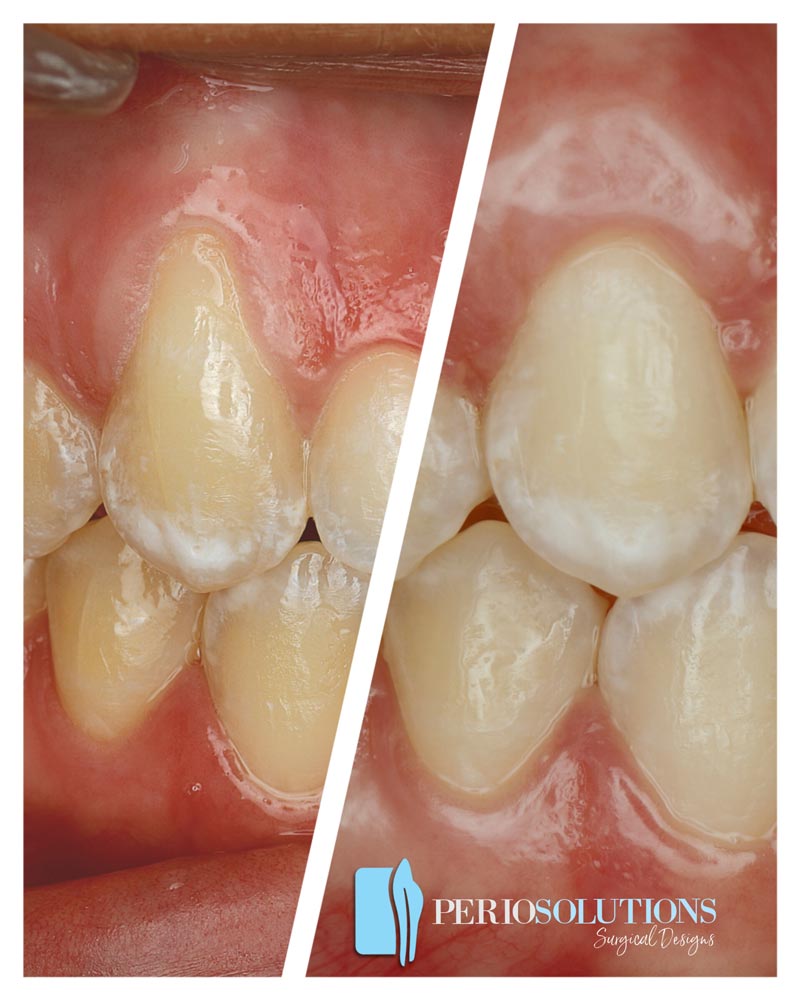
Gum recession is a common dental problem where the gum tissue that surrounds and supports the teeth begins to wear away, exposing the roots of the teeth. Gum recession can cause sensitivity to hot and cold foods, pain, an unpleasant smile and even tooth loss if left untreated. In this blog, we will discuss the causes, symptoms, and treatments for gum recession.
Causes of Gum Recession:
There are several reasons why gum recession may occur, including:
- Poor oral hygiene: Failure to brush and floss regularly can cause the build-up of plaque and tartar, leading to gum recession.
- Gum disease: Gum disease is an infection that affects the gum tissue and can cause the gums to recede.
- Genetics: Some people may be predisposed to gum recession due to their genetic makeup.
- Trauma: Trauma to the gums, such as from injury or aggressive brushing, can cause the gums to recede.
- Aging: As we age, our gum tissue can naturally recede.
Symptoms of Gum Recession:
The following are some common symptoms of gum recession:
- Sensitivity: Teeth may become more sensitive to hot and cold foods.
- Visible Roots: You may notice that your teeth appear longer than normal, which is due to the receding gum tissue. This may cause you to dislike your smile.
- Pain: Gum recession can cause pain, especially when eating or drinking.
- Discoloration: The exposed root surfaces can become discolored. Exposed root surfaces tend to be more yellow.
Treatments for Gum Recession:
There are several treatment options available for gum recession, including:
- Scaling and root planing: This is a non-surgical treatment that involves removing plaque and tartar from the teeth and root surfaces, which can help to prevent further gum recession.
- Gum grafting: This surgical treatment involves taking tissue from another part of the mouth and attaching it to the receding gum tissue. Significant advancements in these procedures have allowed us to become more predictable with less recovery times. These procedures can help cover the exposed root surface and prevent further recession.
- Pinhole surgical technique: This is a minimally invasive surgical technique that involves making a small hole in the gum tissue and then using special instruments to gently move the gum tissue back into its proper position.
Preventing Gum Recession:
The following steps can help to prevent gum recession:
- Brush and floss regularly: Brush at least twice a day and floss at least once a day to remove plaque and prevent gum disease.
- Use a soft-bristled toothbrush: Using a soft-bristled toothbrush can help to prevent trauma to the gums. Several electric toothbrushes are designed with pressure indicators to help patients identify when they are being too aggressive.
- Visit the dentist/periodontist regularly: Regular dental check-ups can help to identify gum recession early on and prevent it from getting worse.
- Quit smoking: Smoking can increase the risk of gum disease, which can cause gum recession.
In conclusion, gum recession is a common dental problem that can cause sensitivity, pain, and tooth loss if left untreated. The good news is that there are several treatment options available, and taking steps to prevent gum recession can help to keep your teeth and gums healthy for years to come. Remember to brush and floss regularly, use a soft-bristled toothbrush, visit the dentist/periodontist regularly, and quit smoking to help prevent gum recession. If you notice receding gums, bleeding gums, discoloration, sensitive teeth or bad breathe don’t hesitate to see a Board Certified Periodontist. They are highly trained to evaluate and discuss your condition and management of your teeth and supporting gums.
Talk to US About an Appointment